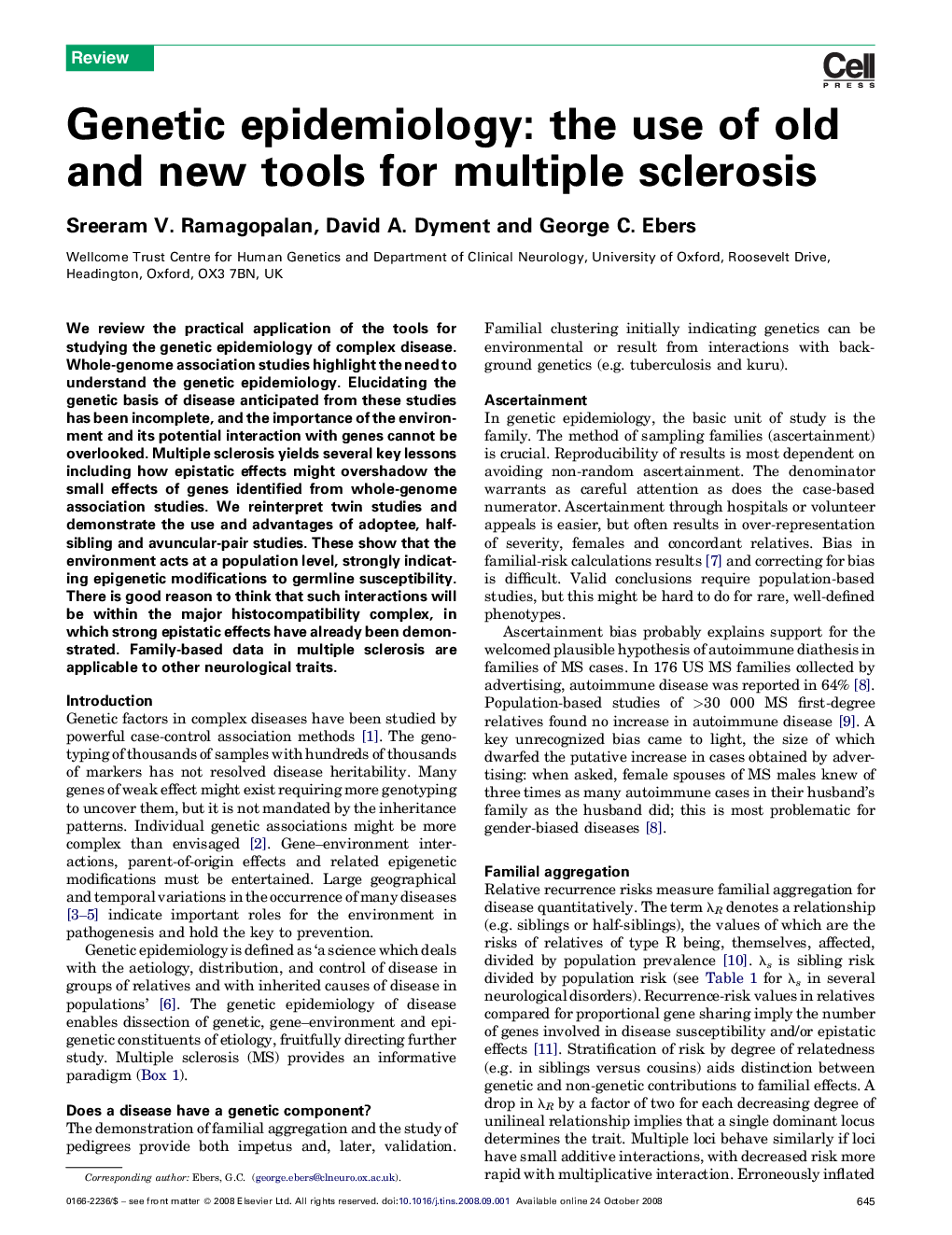| Article ID | Journal | Published Year | Pages | File Type |
|---|---|---|---|---|
| 4354726 | Trends in Neurosciences | 2008 | 8 Pages |
We review the practical application of the tools for studying the genetic epidemiology of complex disease. Whole-genome association studies highlight the need to understand the genetic epidemiology. Elucidating the genetic basis of disease anticipated from these studies has been incomplete, and the importance of the environment and its potential interaction with genes cannot be overlooked. Multiple sclerosis yields several key lessons including how epistatic effects might overshadow the small effects of genes identified from whole-genome association studies. We reinterpret twin studies and demonstrate the use and advantages of adoptee, half-sibling and avuncular-pair studies. These show that the environment acts at a population level, strongly indicating epigenetic modifications to germline susceptibility. There is good reason to think that such interactions will be within the major histocompatibility complex, in which strong epistatic effects have already been demonstrated. Family-based data in multiple sclerosis are applicable to other neurological traits.
